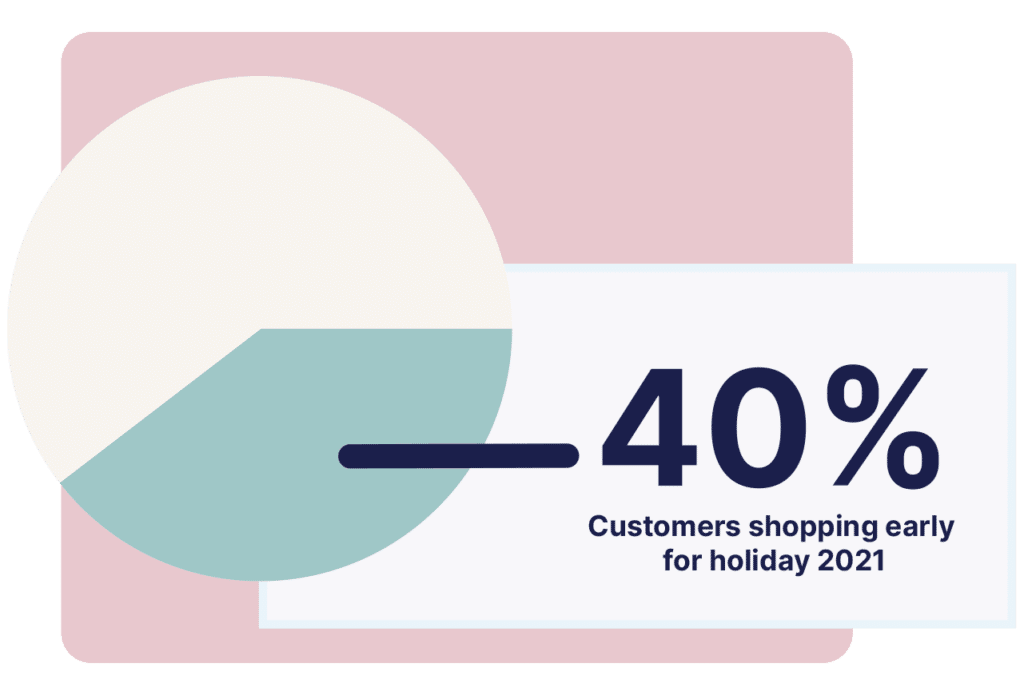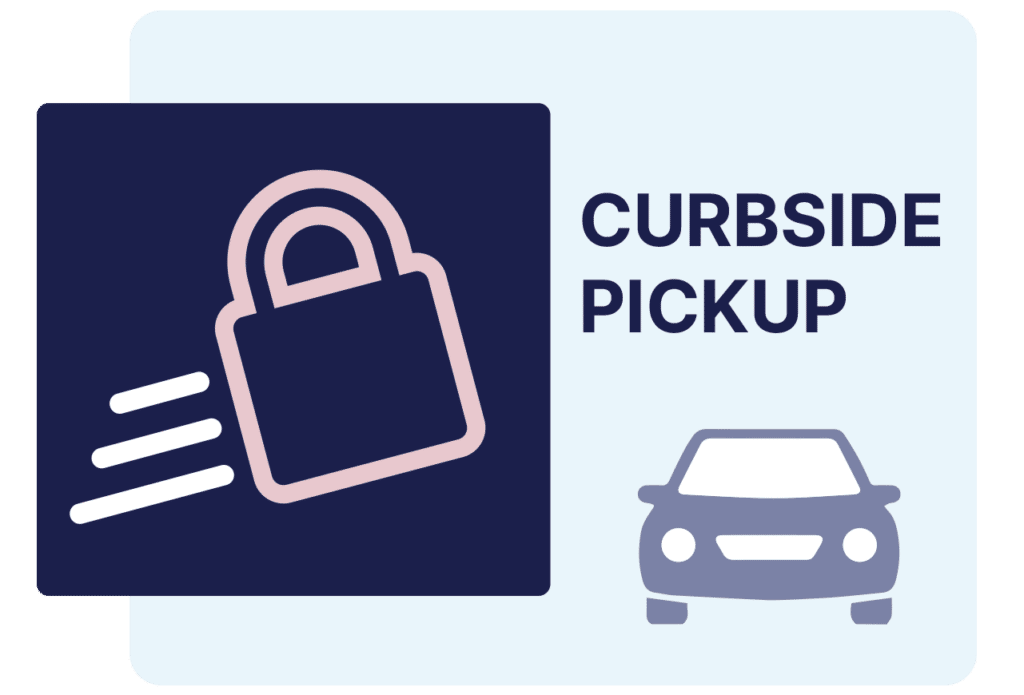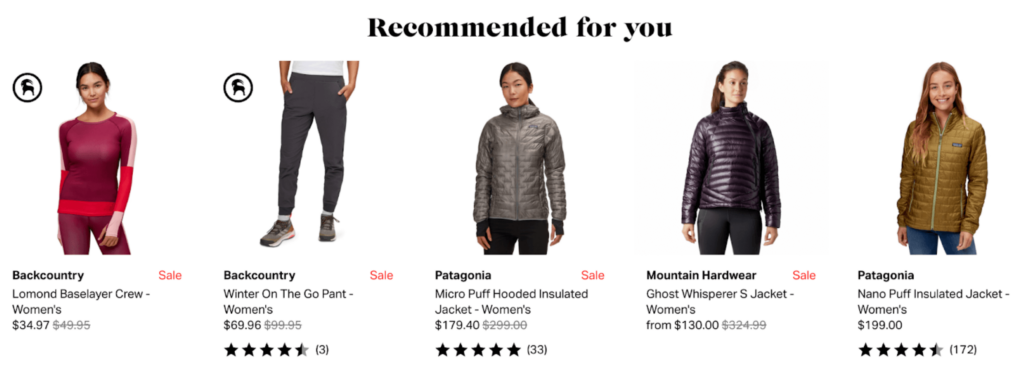Ecommerce holiday sales are predicted to increase by up to 15% in 2021. That’s a total of $210 billion in revenue, surpassing even last year’s pandemic-fueled surge by a sizable margin.
However, it’s not all good news. Supply chain issues and labor shortages pose significant roadblocks to retailers, especially in the face of increased demand. How can ecommerce businesses be more proactive and take these new challenges in stride?
A successful holiday sales strategy this year will include a combination of strong customer experience, smart conversion tactics, and streamlined internal processes. In this article, we’ll discuss some strategies ecommerce businesses can use to build customer trust and meet business KPIs this holiday season.
5 holiday selling strategies for ecommerce
Companies wishing to stand out this holiday season will need to ensure they have a strong online presence. The teams that succeed will factor in higher customer expectations and unanticipated changes in the market, and they’ll pivot quickly to new opportunities to offer value to shoppers. Here are five tips and trends we’re seeing that will give responsive retailers an advantage this year.
Start planning for sales in advance
Holiday shopping is expected to begin earlier than usual in 2021. In fact, over 40% of shoppers say they expect to begin their shopping earlier than they did in 2020 because of anticipated shortages, longer shipping times, and persistent supply chain challenges due to COVID-19.
Shoppers are starting early to avoid empty shelves in retail stores (and backordered items on websites) as a result of products being out of stock. And all of this is happening on top of the regular holiday strain. In any given year, holiday sales put pressure on all systems—CRM, billing, supply chain, human resources, and marketing. And the best way to strengthen these systems and ensure you’re ready to take on the holiday season in full force is to plan in advance.
Without proper planning, you could spend money on the wrong things at the wrong time, miss opportunities, overlook potential challenges, and fail to anticipate your supply chain requirements. We don’t want that, so here are some tips to build into your ecommerce strategy this holiday season:
- Outline your holiday sales targets and Key Performance Indicators (KPIs).
- Bring your entire team on board with the holiday vision and action plan, communicating goals and needs clearly and transparently.
- Create a robust holiday planning workflow, complete with mitigation plans if anything goes south.
- Project your sales by understanding current customer demand and studying previous holiday buying patterns.
- Overestimate demand and stock up on inventory as much as possible. Walmart’s recent measures like chartering freight ships and putting pressure on suppliers to lower costs are not available to every retailer, but anticipating the crunch in inventory can help mitigate some of the shortages.
- Focus on category-based sales than item-specific promotions as specific items might not be in stock. For example, video game stores shouldn’t promote a single brand of console, for example, if that particular item is backordered because of supply chain issues. Instead, they can promote video game consoles in general, or video game titles across console systems.
Make it easier for customers to discover your products
The last thing a customer wants is to frantically search for a product they want to purchase and not be able to find it. Product navigation and discoverability are major factors that affect the shopping experience and can make or break your sales efforts.
Finding products in your online store should be an easy, delightful experience. And the best way to achieve this is by removing points of friction from your store’s navigational experience.
Take the steps to make your audience’s onsite experience seamless, personalized, and KPI-driven, so customers only see products that are relevant and attractive to them—and highlight the products that boost the KPIs you identify as most important, such as average order value or revenue per visitor.
For example, a suboptimal user experience might result in customers searching for a particular product in the product search field only to see a “no results found” page. The most likely course of action for a visitor at that point is to leave your site because it’s clear that you don’t have what they’re looking for.
But an AI-backed product search solution can change this experience. By automatically finding and suggesting the closest match for the visitor’s query, you can make your onsite experience better, help visitors find the products they’re looking for, and drive more conversions and revenue.
After browsing Christmas decorations for several minutes, a shopper typing “gold home decor” into Kmart Australia’s product search sees suggested holiday-related gold home decor.
Give customers the flexibility for BOPIS (buy online, pickup in store)
Customers today want options—speed, convenience, mode of shopping, and pickup—that can give them the freedom to shop however they want. Even as the pandemic and many of its corresponding behaviors draw to a close, we’re seeing hybrid solutions between physical and online becoming the “new normal” for retail experiences.
One of the ways this plays out at scale is through experiences like Buy Online, Pickup in Store (or BOPIS), which provides a sweet spot between a physical and digital shopping experience. In 2020, over 9% of all ecommerce sales, amounting to $72.46 billion, occurred through BOPIS, allowing shoppers more flexibility and security during the pandemic.
And during the holidays specifically, BOPIS offers more convenience. It prevents customers from shopping in a crowded store, standing in a long checkout line, or feeling disheartened by traveling to a physical store and finding that an item is out of stock. Instead, they can buy online while sitting comfortably on their couch and simply pick up the products at their convenience.
But in addition to providing more options for customers, BOPIS is also a great potential holiday sales strategy for retailers. It cuts down on shipping and return costs, it increases the opportunity for in-store upsells to maximize revenue, and it also increases the number of customer touchpoints (such as order confirmation and “ready for pickup” emails) that provide additional opportunities for promotion.
Build hyper-personalized shopping experiences
Holidays are a season of intense competition, price-slashing sales, and innovative conversion-focused strategies. Everyone is fighting for the customer’s attention, which calls for more personalization for retailers to stand out.
Enter AI-powered hyper-personalization. Using real-time clickstream data, a product discovery platform like Krestor understands your target audience and predicts what customers may want to purchase, giving you data-backed insights to optimize your store for more conversions.
You don’t have to take our word for it. Over 80% of shoppers are more likely to purchase from a brand that offers a personalized shopping experience, and more than 44% of them are likely to become repeat customers after the first purchase.
Backcountry does this perfectly with personalized product recommendations for each visitor on individual product pages:
Hyper-personalized shopping features can drive your top business KPIs like unit sales and average order value. With an optimized homepage tailored to products customers are showing interest in and cross-selling and upselling recommendations based on onsite user behavior, reaching your holiday revenue goal becomes significantly easier. And AI allows you to take out the vast majority of manual guesswork as you offer a more immersive experience to your audience.
Find opportunity for engagement even in uncertainty
Sometimes the best opportunities to stand out come when you embrace what’s impossible to change. If you’re looking down the barrel at a lot of backordered items, you can still create positive experiences for customers.
First, make sure that your website is up-to-date and that product pages accurately reflect current backorder estimates. Nothing is more frustrating for a customer than to find an item that is supposedly in stock but to receive an error message at checkout.
You can also get creative with ways to delight customers while they’re waiting for backordered items to ship. Here are just a few ideas for ways to add a personal touch and maintain goodwill at this time of year:
- Print exclusive “it’s on its way” cards for them to give family and friends to open at the holiday in lieu of the physical item
- Offer incentives for customers like delayed billing until the items ship or free expedited shipping once the item does become available
- Thank customers with a free gift or discount to use on a future purchase
- Keep customers updated with creative status updates over email
The “new normal” for holiday sales strategies
The holiday season can be the most profitable time of year for retail companies, but it’s clear that the brands that succeed this year and in the foreseeable future will be the ones who can adapt to the specific challenges of our time. Personalization, customer experience both online and offline, and detailed marketing and merchandising strategies with robust mitigation plans are the key differentiators for premium retailers.
And for the companies that adopt these practices, all predictions point to their holidays being happier than most.
Need help making your products more discoverable to your audience and optimizing your ecommerce experience? Krestor’s AI-backed product search and discovery platform can help you personalize your customers’ shopping experiences all year round and optimize the business KPIs that matter most. Request a demo today.




